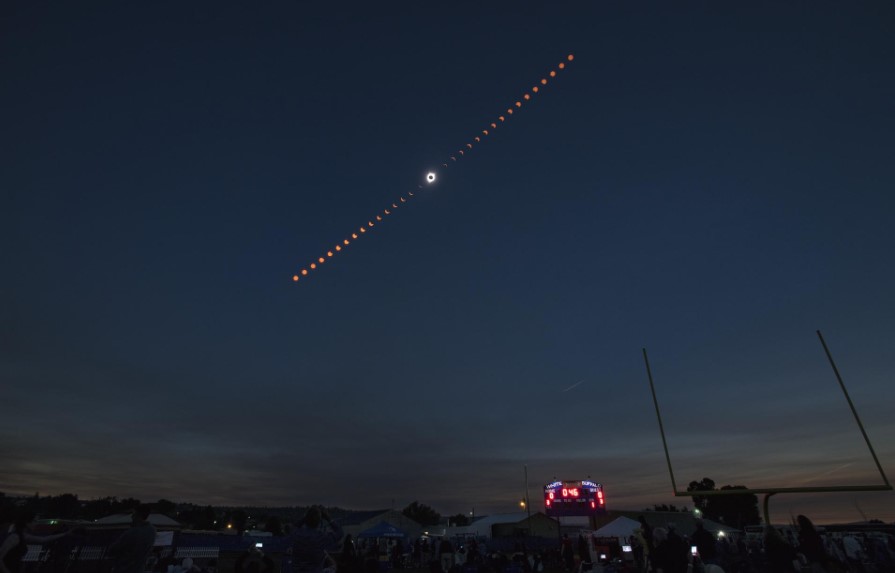Is there a secret to longevity? This health expert says 1,000% yes
In the era of social media, post-COVID, and with mental health at the forefront, a shift is taking […]

The total eclipse will happen on April 8, 2024, and people in the US wouldn’t want to miss it because experts say it’s an experience like never before. NASA says “a total solar eclipse happens when the moon passes between the sun and earth, completely blocking the face of the sun.”
It is said to be the final total solar eclipse that the contiguous United States will be able to see until 2044.
Wider path, more cities
It will be the first total solar eclipse over the United States in seven years, and it will also cross parts of Canada and Mexico. A total solar eclipse will be visible to millions of people in the United States when the Moon’s shadow moves over the country. The eclipse will begin in Mexico’s Pacific coast and continue through Oklahoma, Arkansas, Missouri, Illinois, Kentucky, Indiana, Ohio, Pennsylvania, New York, Vermont, New Hampshire, Maine, and Canada.
Do you recall the breathtaking occasion on August 21, 2017? This one, though, looks to be even more exciting!
Longer totality
Totality will remain longer throughout this eclipse than it did the last time, giving you more time to take in the celestial marvel. Totality peaked in 2017 at about 2 minutes, 42 seconds, but in some places in 2024, it will reach up to 4 minutes, 28 seconds. That’s about twice as long as you can be mesmerised by the dancing stars!
Get ready for solar fireworks
The Sun is getting ready for a spectacle this time! The Sun’s magnetic field is presently more active, approaching or reaching solar maximum, in contrast to 2017, when it was approaching solar minimum. This will make the eclipse of 2024 an extremely spectacular event with more solar flares, coronal mass ejections, and captivating coronal streamers seen throughout the corona.
A sci-fi adventure
But there’s still more! Building on its 2017 discoveries, NASA is planning a number of innovative research programmes during the 2024 eclipse. Scientists are preparing like never before to solve the secrets of the Sun and its effects on Earth, from high-altitude research planes to ham radios. Furthermore, by combining ground-based views with space-borne observations, spacecraft such as NASA’s Parker Solar Probe and ESA’s Solar Orbiter will provide us with unprecedented insights into the Sun’s corona, making for an incredible scientific spectacular!
Safety
During a total solar eclipse, it’s unsafe to directly view the Sun without specialized eye protection. Viewing the Sun through a camera lens, binoculars, or telescope without a solar filter can cause severe eye injury. When watching partial phases, use safe solar viewing glasses or an indirect viewing method.
With all of this anticipation, the total solar eclipse in 2024 is looking like something you won’t want to miss. So, grab your eclipse viewing glasses, set your alarms, and get ready to be amazed by the Sun and Moon’s cosmic dance!

In the era of social media, post-COVID, and with mental health at the forefront, a shift is taking […]

With its fast speeds and revolutionary potential, 5G stands out as a noteworthy milestone in the field of […]